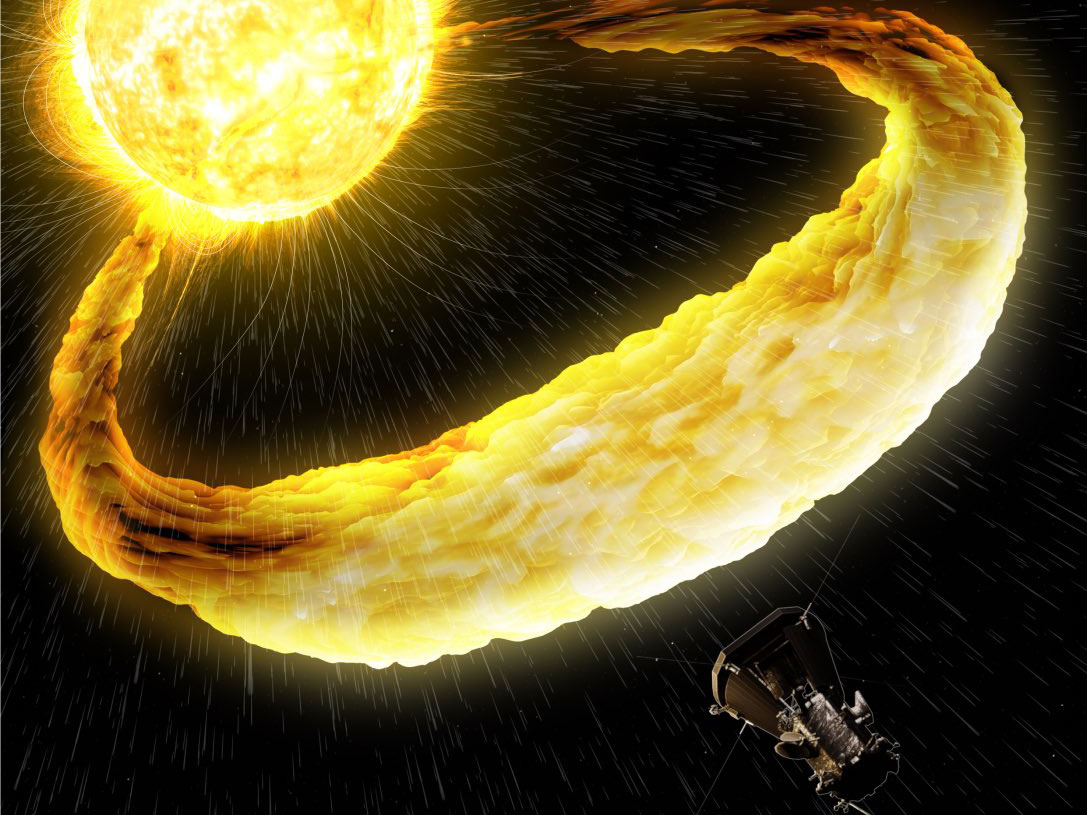Researchers at Know-Center and the Institute of Space Research of the Austrian Academy of Sciences have developed a forecasting tool based on artificial intelligence that predicts the strength of solar storms. This could enable early precautionary measures and prevent blackouts caused by massive solar storms.

©NASA/Johns Hopkins APL/Ben Smith
Blackout danger from space
Although solar storms are usually weak and while Earth is adequately protected by its atmosphere and magnetic field, experts believe a solar storm could hit at any time and have a serious impact on power grids, radio networks and satellites. Around ten percent of all satellites could fail during such an event. It would cause problems in areas where precise positioning is needed, such as shipping and air traffic. In addition, widespread power outages are possible due to increased transformer voltages and damage to submarine cables, leading to nationwide Internet outages.
A geomagnetic storm is caused by the interaction of the Earth’s magnetic field with solar storms. This is roughly comparable to volcanic eruptions on Earth. However, instead of lava, plasma clouds are transported into space. In extreme cases, solar storms can reach Earth in less than a day. The ability of solar storms to cause extreme geomagnetic storms depends largely on the orientation of their magnetic field, in technical terminology known as the “Bz magnetic field component.” Its relative orientation to the Earth’s magnetic field determines how much energy is transferred to the Earth’s magnetic field. The more the Bz-component points to the south, the greater the danger of a massive geomagnetic storm. To date, the Bz magnetic field component could not be predicted early enough to provide a sufficient advance warning before the solar storm hits Earth.
Machine learning provides a better prediction
“We have developed a forecasting tool based on machine learning that optimally predicts the Bz- component. It works particularly well if we use data originating from the first four hours of the solar storm’s magnetic core. New space missions will provide us with even more data in the years to come, further increasing the predictions’ accuracy. That is why in the future our approach will lead to improved space weather forecasts, and in the event of massive solar storms, affected areas are warned early on and major damage can be prevented,” Hannah Rüdisser of Know-Center stated.
The program has been trained and tested using data from 348 solar storms collected by the Wind, STEREO-A and STEREO-B spacecraft since 2007. To test the prediction tool in a real-time experimental mode, the team is simulating how solar storms are measured via spacecraft while evaluating how the continuous feed of new information improves the predictions.
As a next step, the research team will use AI methods to automatically detect solar storms within solar winds. This automation will make it possible to apply the method of Bz-prediction in real time without the need of human users to continuously identify solar storms.
Innovation for space research
The results were recently published as part of a study in the established “Space Weather” journal. They are part of the EU’s “Europlanet 2024 – Research Infrastructure” project, which aims to strengthen and advance the European research network in planetary sciences.
“Europlanet 2024 harbors a large treasure of data originated from space missions, simulations and laboratory experiments. Our goal is to retrieve knowledge out of this data and make it usable. To accomplish this, we want to develop a set of ML tools that will assist planetary science researchers in their work. It will allow us to promote a broader use of ML technologies in data-driven space research,” Rüdisser explained.
While using artificial intelligence for analyzing and classifying planetary datasets is still relatively new, it is increasingly gaining importance. Machine learning allows algorithms to be trained to analyze big amounts of data and to obtain predictions and new solutions. In the last decade, potential applications of ML in planetary science boomed, but appropriate tools in this area are still largely missing.
More information:
Study: Space Weather. Machine Learning for Predicting the Bz Magnetic Field Component From Upstream in Situ Observations of Solar Coronal Mass Ejections. https://agupubs.onlinelibrary.wiley.com/doi/10.1029/2021SW002859